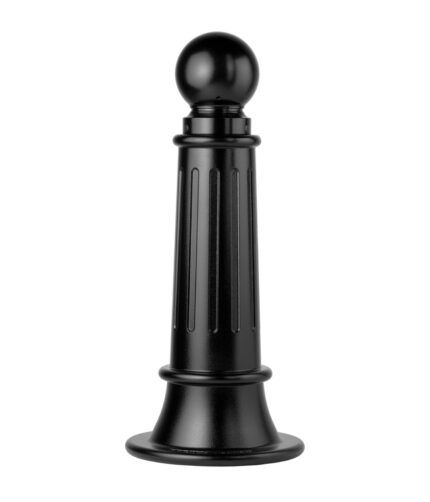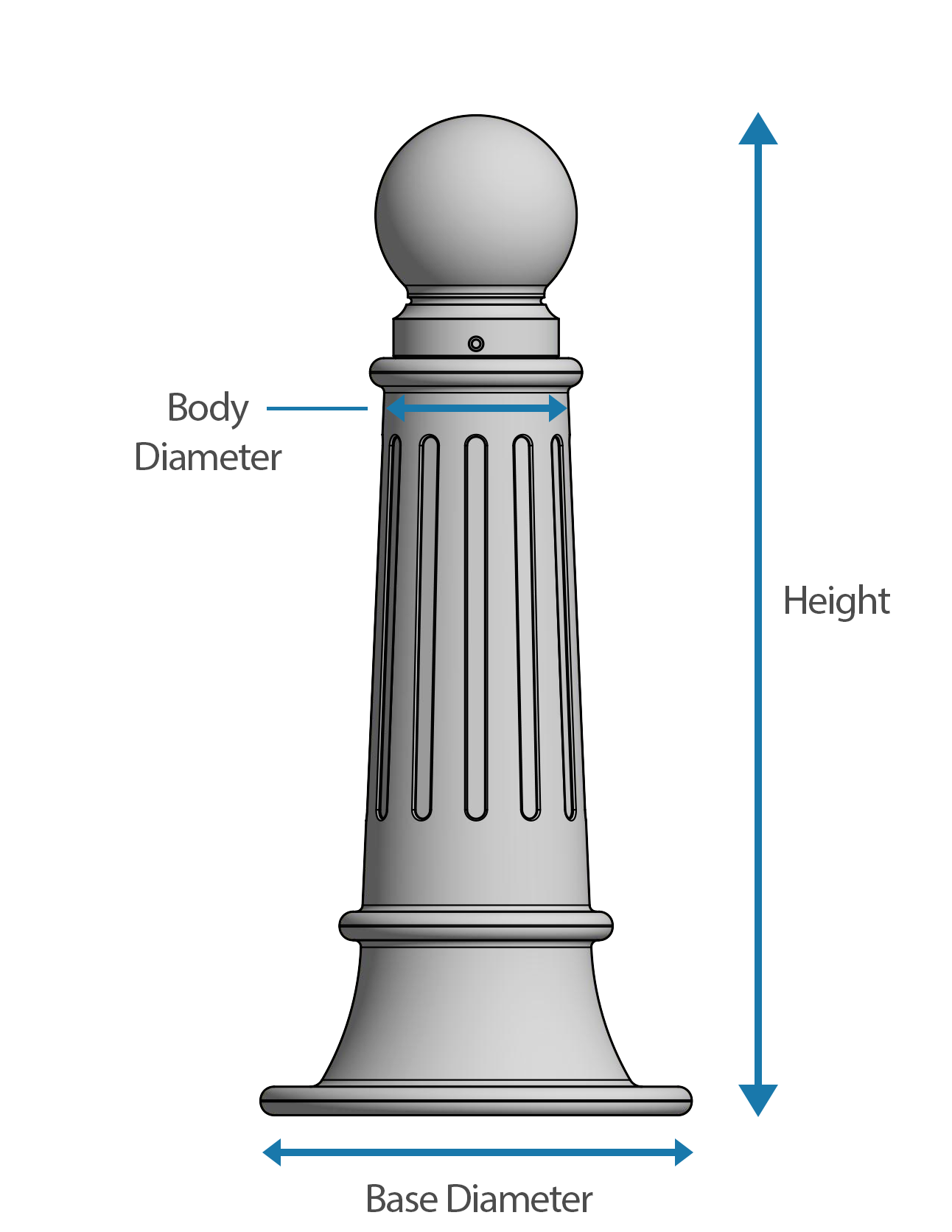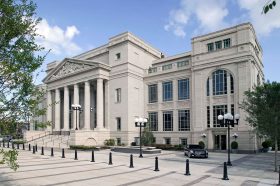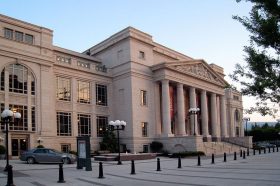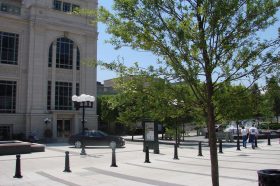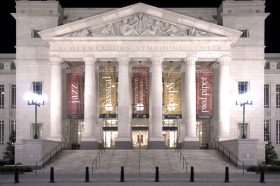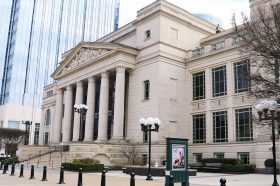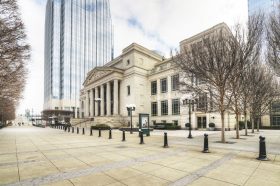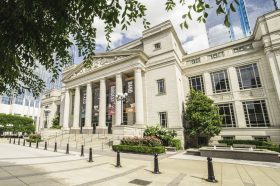Nashville Symphony and the Schermerhorn Symphony Center
The Nashville Symphony was founded in 1946 after a concerted campaign led by advocate Walter Sharp. Mr. Sharp believed passionately that Nashville had the potential to be an important cultural center. He described his motivation: “It seemed part of our social tradition that most people left Nashville to pursue careers and make a name. I determined to stay here, and, by gum, I did. […] what I’ve tried to do is to dislodge to some extent what seems to be my home town’s commitment to the second rate.”
60 years later, Sharp would be thrilled to find that present-day Nashville is an important cultural center and an international destination. Music is at its center. The Nashville Symphony is part of a rich tradition of music that includes classical, country, gospel, bluegrass, and the blues.
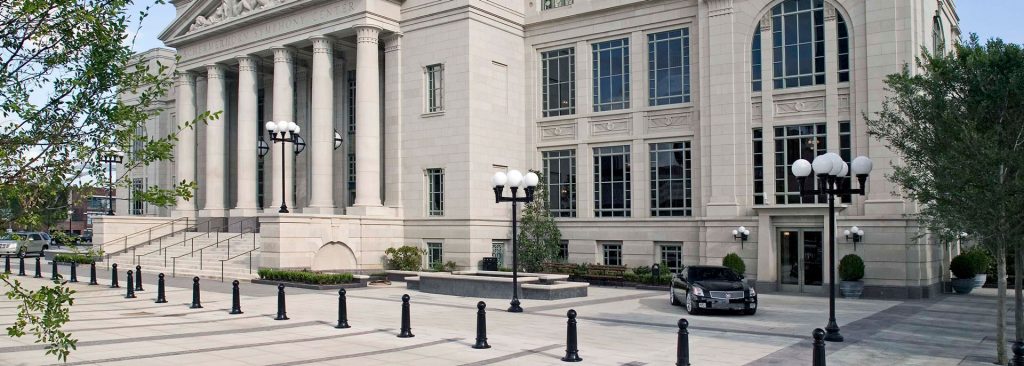
In 2006, the Nashville Symphony took Sharp’s commitment to first-rate and made it architectural: they built themselves a home in the center of the city. Schermerhorn Symphony is a grand building in the Neo-Classical style. Its elegant, impressive façade is crafted from 26,000 pieces of Indiana limestone, South Dakota granite, and marble. Copper roofing sits overtop streamlined cornices, balustrades, and cornices. It is a jewel of Nashville’s culture, named for Kenneth Dewitt Schermerhorn, who helped popularize the city’s Symphony during his time as musical director from 1983 to 2005. Acoustically, Schermerhorn Symphony provides one of the best recording spaces in the country. Since moving into the Concert Hall, the Nashville Symphony has won several Grammys, and musicians note the hall’s rich acoustics have factored into the success of these recordings.
Nashville residents and tourists to the city have been very supportive of the new venue. Yearly, more than 190,000 people buy tickets to regular shows: the center also hosts events, schools, and performers. With so many people moving through this central landmark, the design’s security elements are important. The first level of security is around the perimeter. The building’s main entrance may face a pedestrian cobblestone walk, but the building is in a busy downtown area, where vehicles surge, weave, and occasionally crash. The Center must be protected from vehicle incursion from these accidents as well as from attack as it is a gathering place and cultural icon.
Anti-impact security bollards ring the concert hall. A steel-and-concrete core is sunk deep to mitigate impact forces, but the shell or cover is the R-7589 bollard made of ductile cast iron. The bollards echo and complement the streamlined, Doric-inspired columns supporting the bas-relief over the main entrance. Flutes along the body provide visual interest. Black powder coat protects the bollards against corrosion while matching the other site fixtures like railings, light fixtures, and lamp standards.
The historical profile of the bollards around the Schermerhorn Symphony provide protection without detracting from the grandeur and beauty of the building. From the perimeter of the site, all the way into the resonant center of the music hall, visitors are treated to a carefully crafted experience, intended to delight.
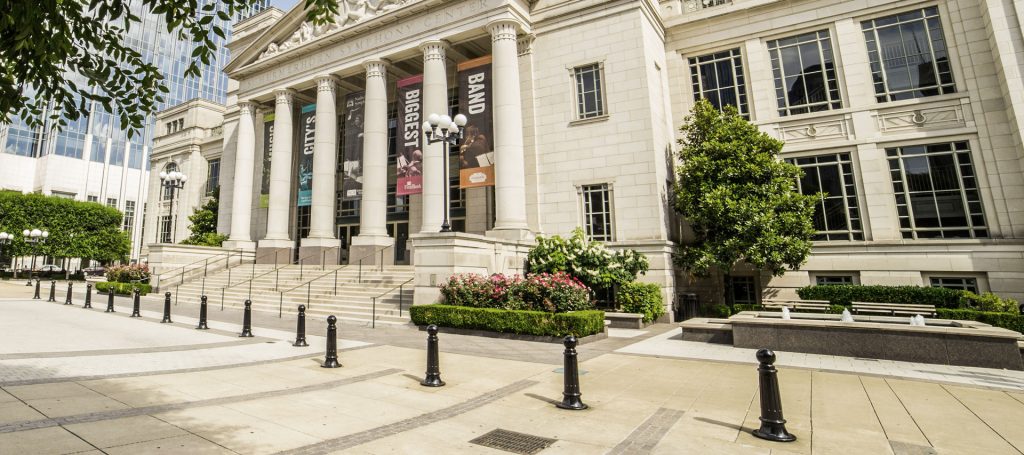
R-7589 DECORATIVE BOLLARD
|
Height |
35 in |
|
Weight |
111 lbs |
|
Body Diameter |
7-3/4 in |
|
Base Diameter |
15 in |
|
Material |
Ductile Iron |
|
Optional Interior Pipe Height Max. |
25 in |
|
Optional Interior Pipe Diameter Max. |
4-1/2 in |

